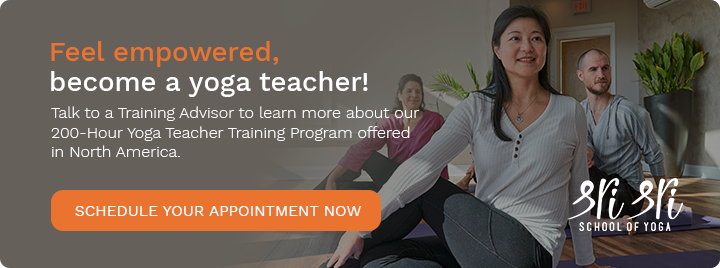Tree pose is a classic standing yoga pose that helps improve your strength, balance and focus. It replicates the graceful, steady stance of a tree and helps you feel grounded and centered.
In Sanskrit, the ancient language of yoga it is known as Vrksasana (Vrak-sa-sana) or Vrkshasana (VRik-shah-SUN-aa). Vriksha (or vrksa) means tree, and asana means pose. This balancing pose is an excellent addition to any yoga practice and can be performed by almost anyone with the modifications described below. Let us find out how you can do it in the right way.
Level of Difficulty: Beginner/Intermediate
Step-by-step instructions
Vrksasana (tree pose) teaches you to simultaneously press down and feel rooted as you reach tall like the branches of a mighty tree. In this pose, you find a sense of groundedness through the strength of your standing leg.
- Stand tall in a mountain pose with your arms relaxed by your sides.
- Bend your right knee and place your right foot high up on your left thigh. The sole of your right foot should be placed firmly against your left inner thigh.
- Make sure that your standing leg (left leg) is straight. Find your balance.
- Once you feel steady, take a deep breath in and bring your palms together in Namaste (prayer pose) at your chest. Keep your shoulder blades relaxed.
- If you are comfortable with this, you can take both your arms above your head either with Namaste or arms apart resembling the wide-topped tree.
- Look straight in front of you and gently focus your gaze on an unmoving object. A steady gaze helps maintain steady balance.
- Ensure that your spine is straight, and continue breathing deeply. Hold the pose for five to ten breaths.
- On a slow exhalation, gently bring your hands down to your sides.
- Gently bring your right foot to the ground and return to mountain pose.
- Repeat on the other side, this time, with your left foot resting against your right thigh.
Note: Do not place your raised foot against the knee joint, it can harm your knee. Place it above or below the knee only.
Benefits of tree pose
- Increases concentration
- Improves physical balance and mental resilience
- Helps relieve sciatica
- Strengthens the legs
- Opens the hips
- Boosts energy
- Strengthens your core
- Stretches around your shoulders and your back (latissimus dorsi)
- Improves your posture and alignment
Balance and longevity connection: one more perk to practice tree pose

There’s research showing that balance is a good predictor of life expectancy. One study found a clear relationship between how long people in their fifties could stand on one leg with their eyes closed and whether they would be alive thirteen years later.
Another study found that for those unable to complete the balance test, there was an 84% higher risk of death from any cause. This link remained even when other factors including age, sex, BMI, and preexisting conditions or health risks like coronary artery disease, hypertension, obesity, high cholesterol, and diabetes were taken into account.
Tree pose is a great place to start practicing balancing poses.
Precautions
Avoid tree pose if you are suffering from any of the following conditions:
- Migraine headaches
- High or low blood pressure (those with high blood pressure may do tree pose but without raising the arms above the head, as doing so may raise the blood pressure a little)
- Insomnia
Modifications and variations
-
To modify:
For a beginner’s variation of tree pose, instead of aiming for the inner thigh, use the ankle as a kickstand, propping the raised foot up on the inner ankle with the toes on the ground for balance.
The raised foot can also be placed below or above the knee if placement on the inner thigh is too difficult.
Practice finding your balance by bending and lifting one leg while wrapping your arms in a hug around the bent leg.
You can also utilize the support of a wall with one hand until you find your balance.
-
To increase the challenge:
Keep your palms together and lift your hands in a prayer position up above your head.
Close your eyes and do your best to hold the pose without wavering.
Preparatory poses and follow-up poses
- Butterfly pose – Preparatory
- Warrior II – Preparatory
- Triangle pose – Follow-up
While a regular yoga practice can result in improved health, it is not a substitute for medical treatment. It is important to learn and practice yoga under the supervision of a trained teacher like in our online Art of Living Yoga Studio. In the case of a medical condition, practice yoga only after consulting a doctor.
Are you interested in becoming a 200-Hour certified yoga teacher?
Sri Sri School of Yoga is a registered school with Yoga Alliance. It offers the most authentic, traditional (scripture-based), and accessible 200-Hour teacher training programs in online, hybrid and in-person set up. To find out more, schedule an appointment to talk to one of our yoga ambassadors.


